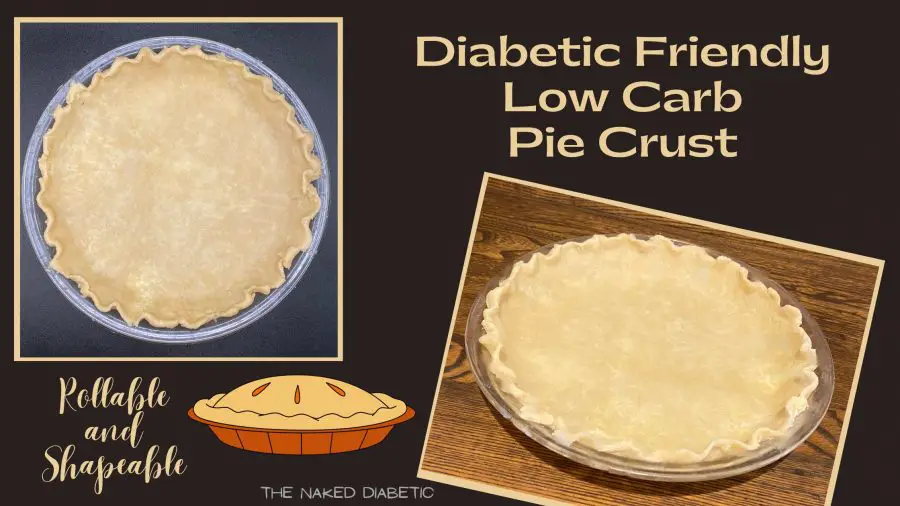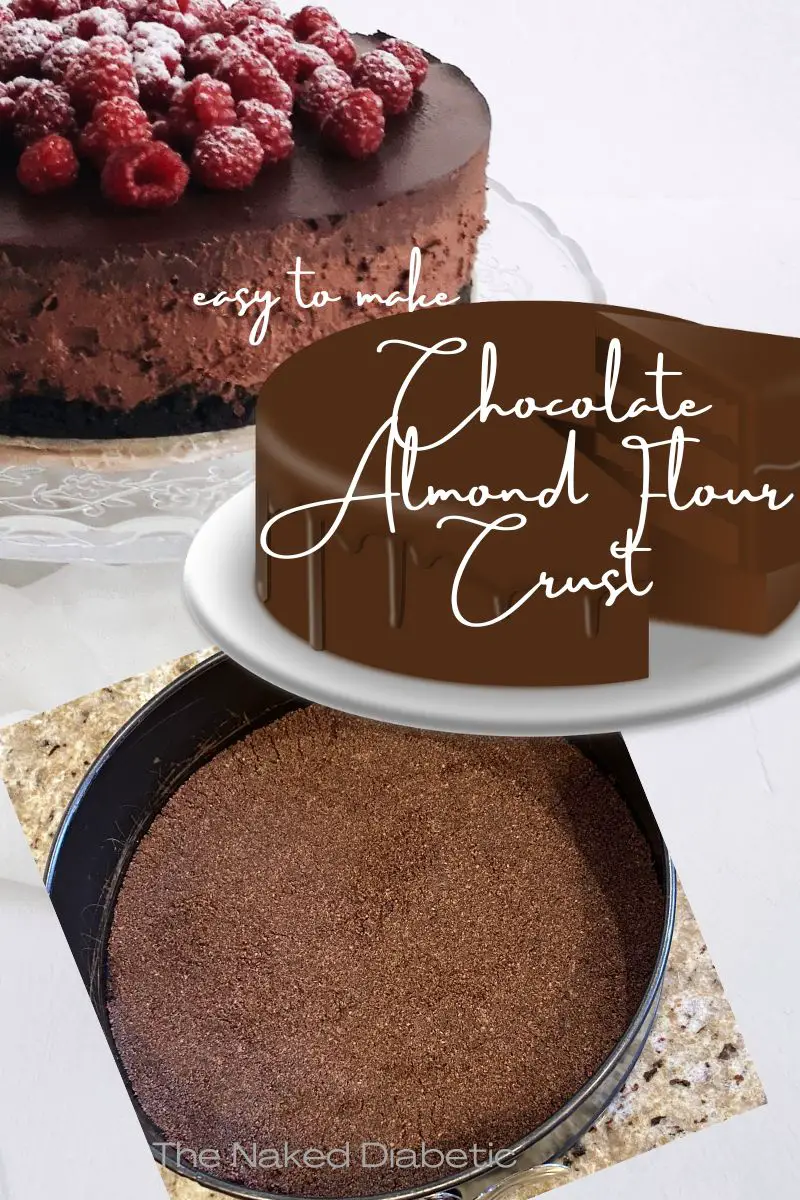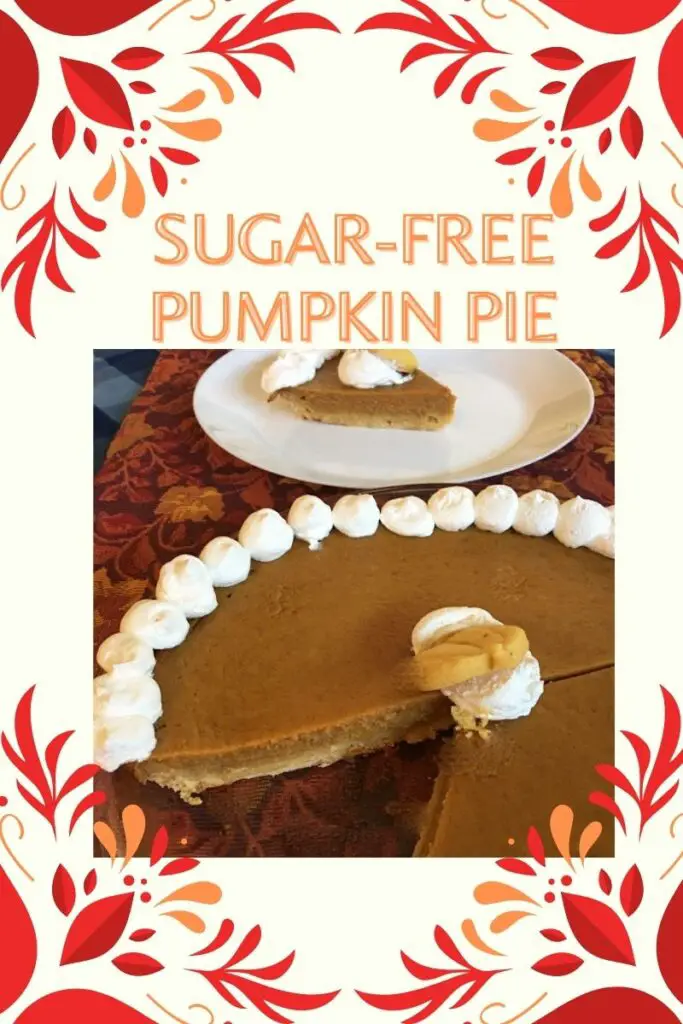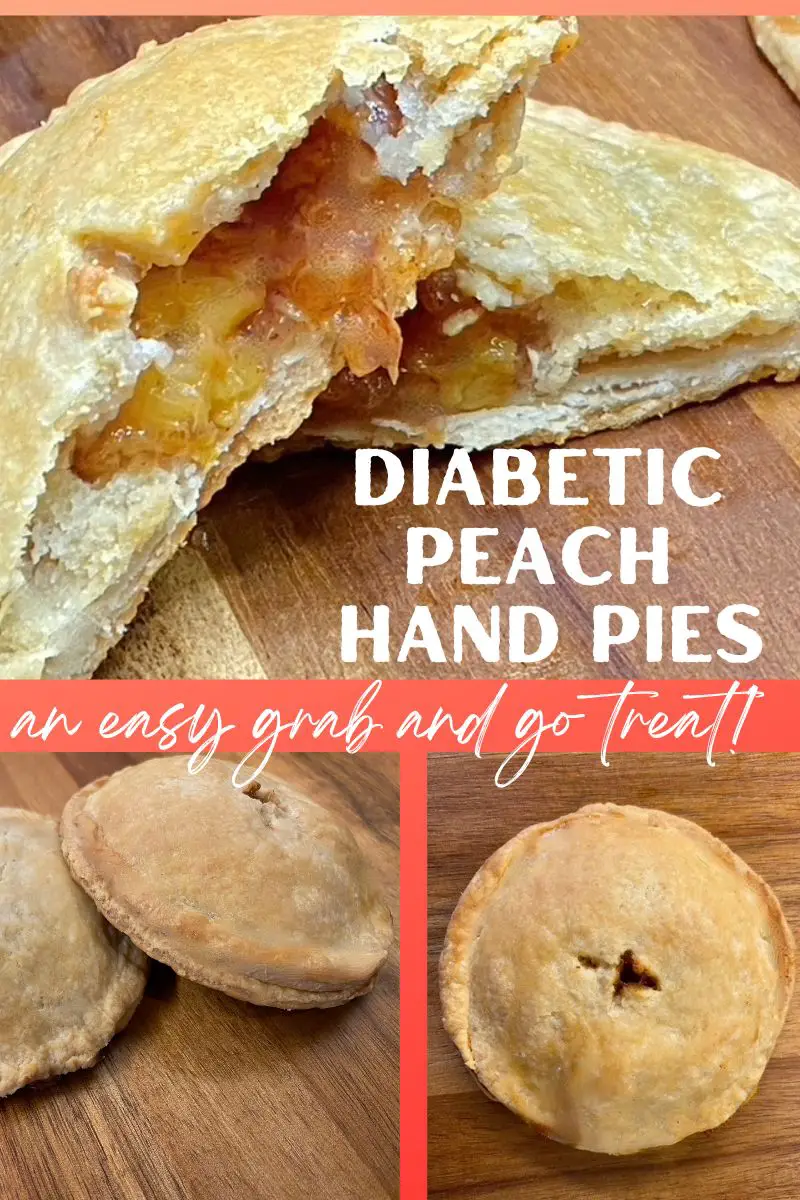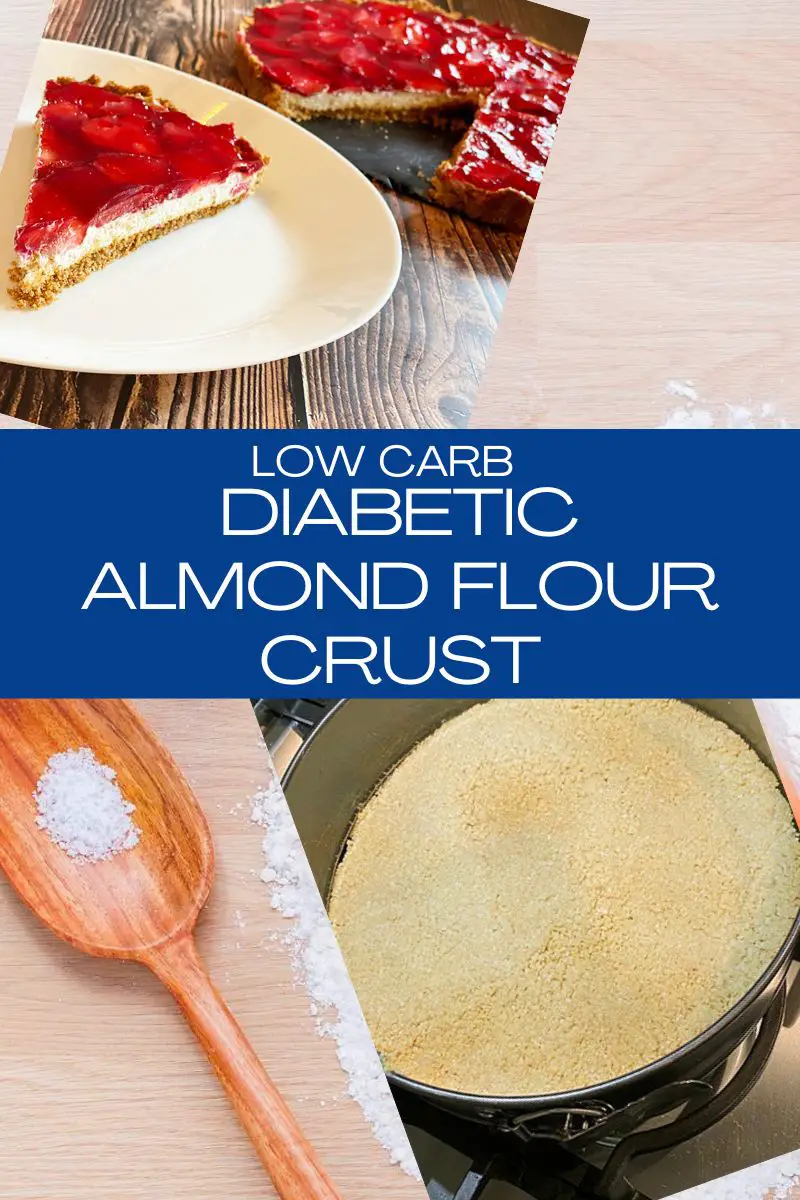This website may contain affiliate links. When a purchase is made through our links, The Naked Diabetic may receive a commission, at no cost to you.
 . Recipe created by Tracey of The Naked Diabetic
. Recipe created by Tracey of The Naked Diabetic
When baking diabetic-friendly desserts, having a good Diabetic Pie Crust Recipe is a must. Most (well almost all!) low carb pie crust recipes are made with almond flour. Almond Flour does make a great crust but is not always rollable. I like to have a nice rollable crust that is low-carb, and diabetic-friendly but looks and tastes like a regular pastry crust.
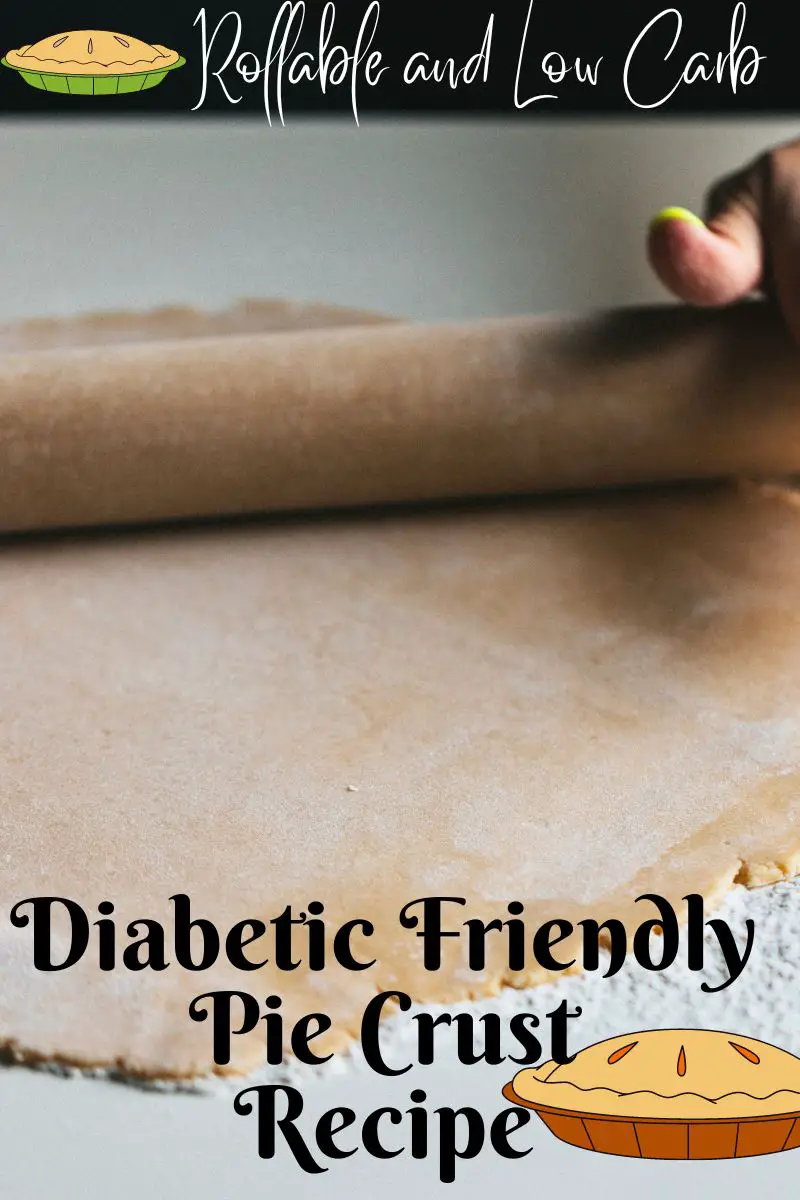
Using this diabetic pie crust recipe, you can make just about any pie diabetic-friendly. You can even make hand pies and meat pies using the right crust. You will find the necessary ingredients in our diabetic-friendly pantry list of essentials.

Special Equipment
- Pastry Blender
- Sieve
- Rolling Pin
Ingredients List
- Carbalose Flour or King Arthur Keto Wheat Flour
- Butter (or shortening for a flakier crust)
- salt
Pro Tips f and FAQs
In this recipe, I provide the option to switch from Carbalose flour to King Arthur keto wheat flour. Carbalose Flour can be difficult to find, and King Arthur keto wheat flour is an excellent substitute.
Sift the Flour
We use Carbalose Flour in the diabetic pie crust recipe. Carbalose is a wheat-based low-carb flour. It goes through an enzyme modification process. It is a perfect replacement for all-purpose flour that is low carb and behaves a lot like all-purpose flour. Carbalose flour is heavier than all-purpose flour. Sifting the Carbalose flour will help to remove any lumps and loosen the flour making it a bit lighter.
Measure first and then sift. I recommend using a sieve as Carbalose can be hard to sift in a double-screen sifter.
Measuring
Measuring Flour – Do not pack flour when measuring. Fill the measuring cup until it is above the top of the cup. Using a flat knife, level off the top edge of the cup.
Measuring Butter – The wrapper on most butter has measuring lines which are a perfect reference. This is especially helpful, as you can just slice at the desired measurement, making it easy to cut into small cubes.
If measuring butter with a measuring cup, use a flat-topped dry ingredient measuring cup. Push the butter into the cup, making sure that there are no air pockets. Once the butter is packed in, level off the top using the flat side of a knife.
Cut butter into small cubes, before adding it to the flour.
Measuring Water – if you have small prep bowls, use one for the water. Fill your measuring spoon with cold water. Pour the water into the small prep bowl. Using a prep bowl is optional, but helps avoid spills.
Butter Temperature
Using cold butter is a must. Just mix and roll the crust as directed and make sure that you don’t overwork it. If you handle the crust too much, the warmth of your kitchen or your hands begins to melt the butter. When you use cold butter, the butter will melt during the baking, creating flakier layers.
Keeping everything cold
If your kitchen is warm and you are making this recipe, chill the flour and the bowl before you start. This will help keep the butter from melting while mixing. I can’t tell you how many times I saw an empty mixing bowl in the fridge growing up.
If you have rolled the crust in between waxed paper or parchment, consider popping it in the fridge for a few minutes before baking. You can rest it on a baking sheet or drape it onto the pie plate for a few minutes before baking. Another quick and easy way to chill a rolled crust is to roll it up loosely in waxed paper and then stick it in the fridge. Unroll the waxed paper roll over your pie plate after it is chilled.
For water, add a couple of ice cubes while you are mixing. This will keep the water at a consistently cold temperature while preparing this recipe.
Using a Food Processor
In our diabetic pie crust recipe directions, we use a hand pastry cutter. I find that this gives the best results for our finished crust. If you prefer to use a food processor, follow the instructions listed below.
- Sift and pour flour into the food processor
- Add the cold cubed butter.
- Sprinkle one tablespoon of water over the ingredients.
- Pulse in your food processor for a few seconds
- Add more water until you get a crumble that sticks together when pinched. Crumble pieces should be about the size of half a pea, but a few larger-sized pieces are ok.
Rolling pastry
Chill the dough
If you have the time, Chill the dough before you start rolling. Form the dough into a ball or a flat round and wrap it tightly in plastic wrap. Ensure that there is no air getting into the dough. Double-wrap your dough ball if necessary.
Chill for at least 25 minutes and even overnight. Chilling the dough will help firm up the butter, which is key to a flaky crust. Not chilling can result in a tougher dough as the butter tends to get warm and spread out and gets absorbed into the flour.
Let sit at room temperature after chilling for at least 10 minutes before rolling. This dough can be sticky.
Sprinkle a small amount of Carbalose flour onto your rolling area to prevent sticking. Be careful not to overdo it, as it can make your pastry dough dry.
Form a round
Using your hands form the dough into a ball and then press it into a circle.
When rolling – Start in the center and roll out towards the edges, working your way around the crust.
Do not over-roll the pastry. Rolling too much can cause the butter to melt too much and the dough can become tough.
How to Make Diabetic Pie Crust.
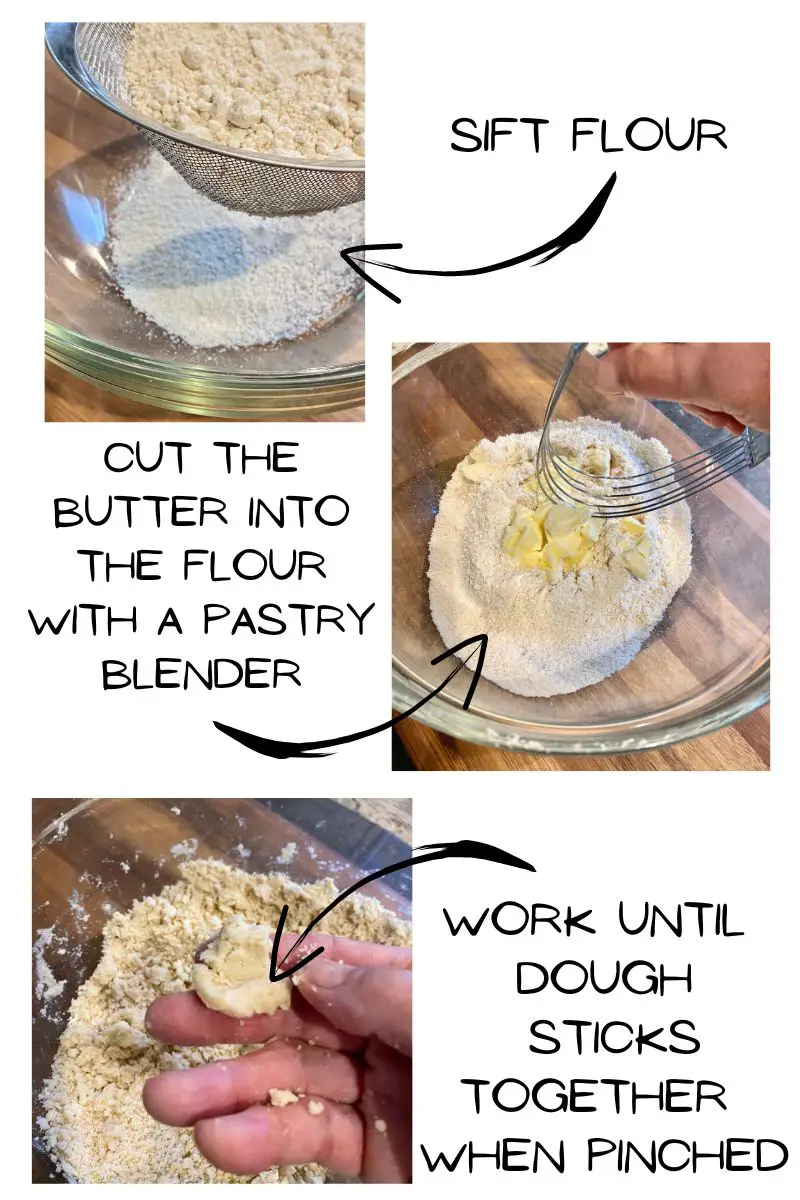
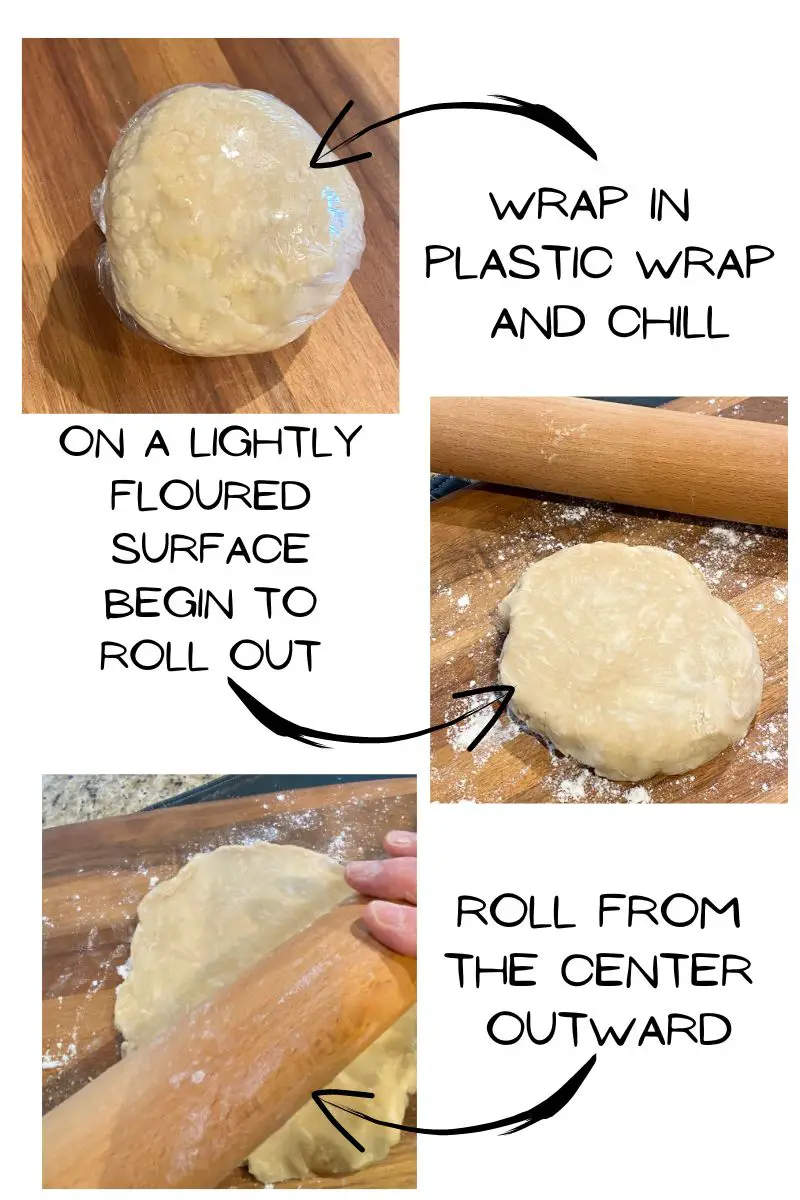
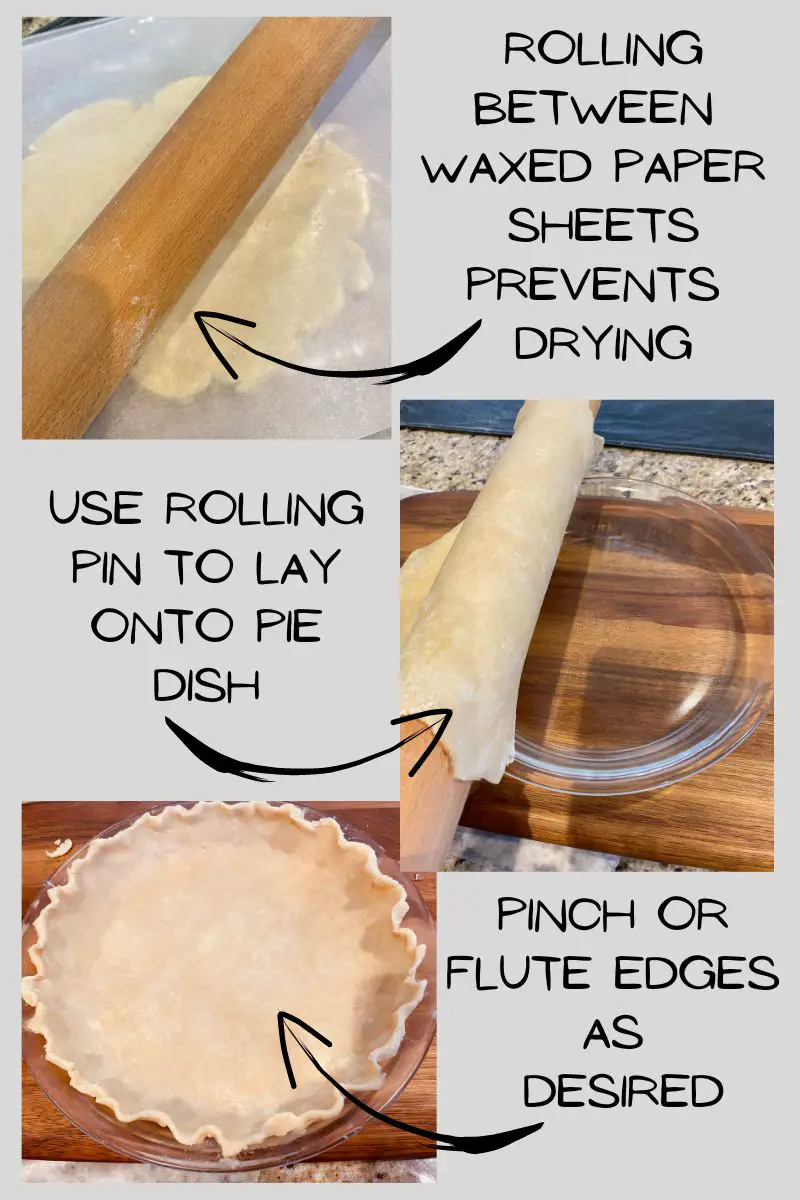
Substitutions
Using Butter or Shortening
There is always discussion about which is better, butter or shortening. You can use either. BUT…If you choose to use shortening, add salt when mixing your ingredients. I prefer butter because the flavour is better for the finished pie crust.
I also find that the crust made with butter is lighter and flakier than the shortening crust. Shortening will make a crust that is denser and when you are using the Carbalose flour, it can become too dense.
Whichever you choose temperature is super important. Using cold butter or shortening will yield the best results.
Substituting flour
You can easily substitute the Carbalose flour with King Arthur keto Wheat Flour in this diabetic pie crust recipe. The measurements are the same. Carbalose flour has a whiter colour, which is more like all-purpose flour. King Arthur Keto Wheat flour looks a little more like whole wheat flour, just not quite as dark. Both perform well in this diabetic pie crust recipe.
Using almond flour or coconut flour will not give you the rollable crust that you might be looking for. If you don’t mind pressing the crust in with your hands, by all means, feel free to use these products. You may need to adjust the water amount. If you are looking for a rollable crust, stick with what is recommended or the King Arthur Keto Wheat flour.
Using Vodka instead of water.
Some people swear that vodka makes a flakier, softer crust. I haven’t noticed a difference, but I normally use water. Feel free to substitute if this is a preference of yours.
Adding Vinegar
Adding vinegar is a personal preference. Many professional bakers swear by it and many don’t. I have a couple of old cookbooks from my grandparent’s estate and vinegar is listed as an ingredient. Vinegar is said to inhibit the forming of gluten making the crust easier to roll and less likely to shrink. I have tried using vinegar and haven’t noticed a real difference. It doesn’t hurt the crust, so if you want to add it because you prefer it, go for it. One teaspoon is all you need. add it to the water or sprinkle it over the cold butter.
Blind baking your diabetic pie crust
Blind baking just means to pre-bake your crust. I often pre-bake pie crusts. It is a great way to guarantee a crisp, (not soggy) crust. Blind baking is especially important for custard-type pies. The moisture from the custard seeps into the crust, and pre-baking of blind baking prevents this.
To blind bake this crust – preheat your oven to 400°F (205°C). Prick the bottom and sides of the crust, to allow heat to escape during baking. Bake for 8 to 10 minutes in the centre of the oven. Remove from the oven and let cool and then use as desired.
Pre-baked crusts can also be frozen for up to one month in an airtight container.
Using Pie weights
Pie weight can be used to keep the crust from expanding and staying flat. I don’t always use them very often. It is important to prick the crust with a fork to allow steam to escape.
If using pie weights, place a piece of parchment over the pie dough and pour the weights onto the paper. Bake as directed.
Tips for using leftover pie crust dough.
When you have rolled and fit your crust into your pie plate or tart tins, you may find that you have leftover bits of pie crust dough. This is a great opportunity to make embellishments for your pies.
I use mini cookie cutters and cut pumpkins, apples, leaves, stars or snowflakes. Put them in an airtight container and use them to decorate your pies when serving.

Low Carb Diabetic Pie Crust Recipe
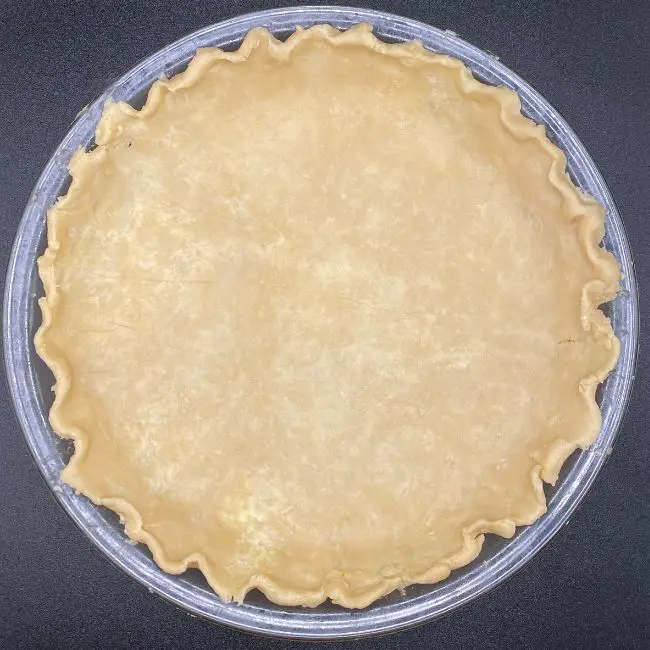
Low Carb Diabetic Pie Crust Recipe
Ingredients
- 1 ¼ cups Carbalose Flour (sifted) (or King Arthur Keto Flour)
- ⅓ cup cold butter
- 3-4 tbsp cold water
Instructions
- Place sifted Carbalose flour into a mixing bowl.
- Cut the cold butter into small pea sized cubes.
- Using a pastry blender, cut the butter into the flour, making sure you get the sides of the bowl.
- Sprinkle 1 tbsp of cold water over the mixture, repeating as needed.
- Work with a pastry blender until the dough is a crumble, about half the size of peas.
- *When the dough is ready it sticks together when pinched between your fingers.
- Form the dough into a ball and wrap it in plastic wrap.
- Refrigerate for at least 20 minutes before rolling. (you can refrigerate overnight)
- When you are ready to roll the crust, remove it from the refrigerator and let it sit for a few minutes at room temperature.
- Roll on a lightly floured surface or between two pieces of parchment or waxed paper.
- Carefully lift the rolled crust with a rolling pin (draped over it) or with the paper and place it over a pie plate.
- Flute or fold the edges as desired.
For a Pre-Baked Single Crust
- Pre-heat your oven to 400 ° F (220°C)
- Prick the crust bottom and sides with a fork.
- Bake in the center of the oven for approximately 10 minutes, or until just turning a golden colour.
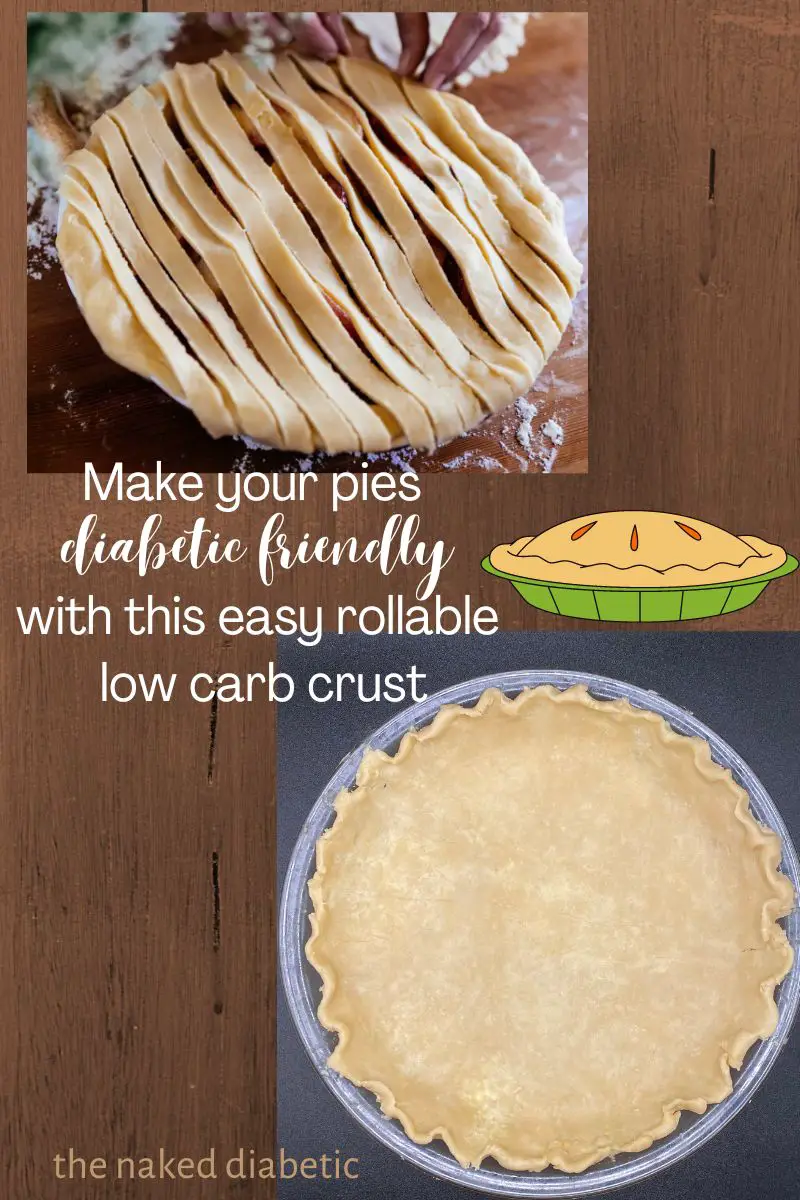
Nutritional Information
The nutritional information posted here is based on these exact ingredients. The information is for the entire diabetic pie crust recipe. Divide according to how many servings you make using this recipe for per-serving information.
- Calories – 910
- Total fat – 74gr
- Saturated fat – 38.5 gr
- Total Carbohydrates – 60 gr
- Fibre – 36 gr
- Net carbs -24 gr
- Protein – 39 gr
*Note*. A typical slice of pie would be cut into 8 pieces. therefore 1/8th of this recipe has 114 calories, 9 grams of total fat,4.8 grams of saturated fat, 7.5 grams of total carbs, 4.5 grams of fibre, 3 grams of net carbs and 5 grams of protein.

This website may contain affiliate links. When a purchase is made through our links, The Naked Diabetic may receive a commission, at no cost to you.

